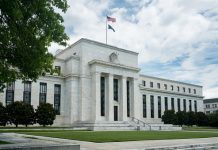RBA more dovish than September; setting the scene for a further rate cut next month.
As expected, the Reserve Bank Board decided to hold policy steady at its October Board meeting.
However, from our perspective, there is considerable encouragement that the Board plans to move next month having given the Federal Government clear air to sell its Budget tonight.
There were a number of key changes in the Governor’s Statement that point to an imminent move in policy.
Firstly, the Statement ended on a very clear note, “The Board continues to consider how additional monetary easing could support jobs as the economy opens up further.” In this Statement he chose to end the Statement on this note rather than in September when the second last sentence read “continues to consider how further monetary measures could support the recovery”.
The final sentence in the Statement will always be the one of most importance. Furthermore “additional monetary easing” is a stronger signal than “further monetary measures”.
Secondly the Governor directly refers to a further easing by quoting market pricing “3-year yields have fallen to around 18 basis points as markets price in some probability of further monetary policy easing”. It is my experience that central banks like to refer to market pricing when it is consistent with their own biases.
The language around the labour market is stronger – “The Board views addressing the high rate of unemployment as an important national priority”. Further “Unemployment and underemployment are likely to remain high for an extended period”. That compares with the September Statement “it is likely to be some months before a meaningful recovery in the labour market is under way”. This harsher language around the labour market is despite “the unemployment rate is likely to peak at a lower rate than earlier expected”. That is because the Bank’s real concern is the length of the period where Australia will experience high unemployment so it needs to do whatever it can as quickly as possible.
The rhetoric around the activity in the economy is also more sobering. Although the description of the recovery as “bumpy and uneven” was repeated from previous statements the additional insight “it will be some time before the level of output returns to its end 2019 level”. In its Statement on Monetary Policy in August the RBA forecast GDP growth (through the year) of minus 6% in 2020 and +5% in 2021. That implied a lower level of output by end 2021 but a more positive view on the near term unemployment rate presumably means the Bank will be raising its current implied growth rate in 2020 H2 from around 1.4% (compared to Westpac’s forecast of 4%) and therefore may be considering significantly lowering its forecast for 2021 from the current 5%.
There is some reference to the possibility of further use of the RBA’s balance sheet to support fiscal policy. “Public sector balance sheets in Australia are in good shape, which allows for continued support”.
Last month, after it had lifted to USD 0.738 the Governor discussed the AUD for the first time in many months. He noted that “the Australian dollar has appreciated to be around its highest level in nearly two years”. To ensure that markets are aware that although the AUD has fallen (by around US 2¢) since the last meeting the RBA still sees it as “high” the Governor notes that “the Australian dollar remains just a little below its peak of the past couple of years”.
Readers will be aware that Westpac forecasts that, at the next Board meeting on November 3, the Board will decide to cut the cash rate; the three year bond target; and the rate on new borrowings of the Term Funding facility to ten basis points. To ensure that these objectives are internally consistent we expect that the RBA will reduce the rate which its pays on its Exchange Settlement balances to one basis point.
In addition, following tonight’s Federal Budget announcement, we expect that the Governor will announce, as part of the November stimulus package, a general intention to purchase both Australian Government and State Government bonds across maturities from five to ten years.













